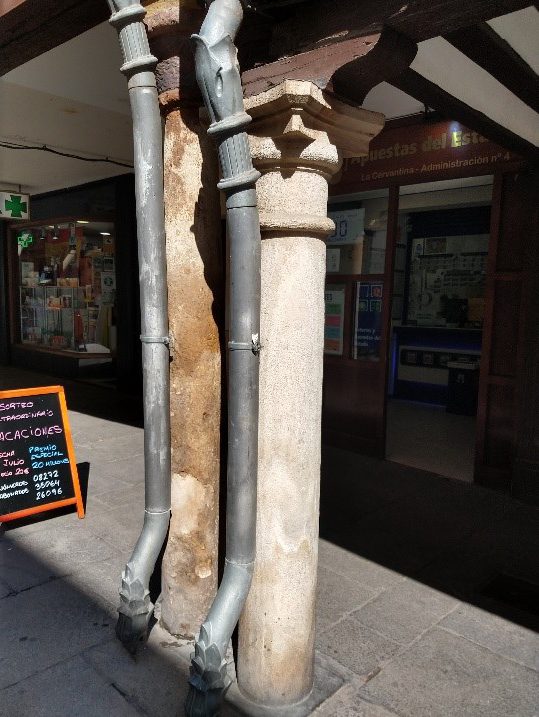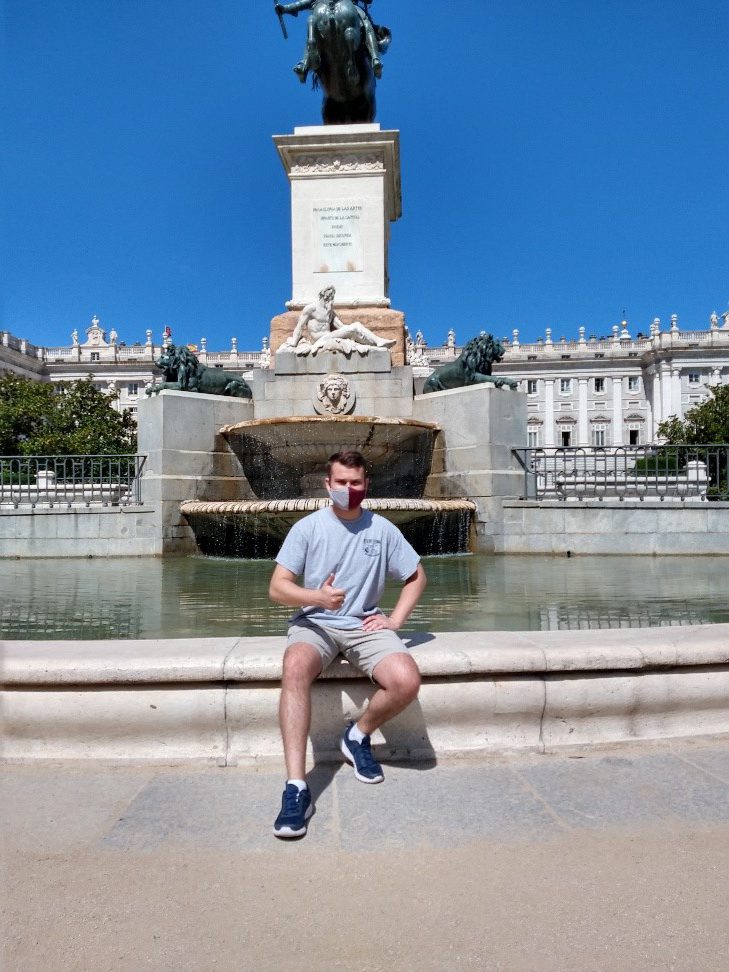Taylor McGee
Instituto Franklin
Alcalá de Henares, Spain
Summer 2021
6/7/2021
One of the things that has come to hit me pretty hard is just how different things are in Spain than in the states. The first thing I really noticed was the birds. For as long as I can remember the birds have sounded more or less the same, but in Spain they have a very different set of birds, which make different, and sometimes truly disturbing, noises. For example, the city of Alcalá de Henares is well known for it’s storks. The University has storks on its crest, there are massive stork nests in all the towers, and you can hear their haunting clacking sounds all night as they watch over the main walkway. One of the other things that really struck me was the power of legacy that is clear in Spain. I’ve included a picture of two columns, and if you look at them, they look fairly distinct. The reason why is because the smaller column is believed to have been created in the first century C.E. by the Romans, when they settled the region. After the Muslims were expelled from the region in roughly 1200 C.E., the city was rebuilt over a period of roughly 200 years, and the builders incorporated some of the columns they found in the ruins of the Roman cites. The larger column, on the left, was made during the middle ages when the city was being rebuilt and is dated no earlier than 1400. Everything from the architectural choices to the very materials the buildings are constructed from tie back into the history of the Iberian Peninsula.

On a slightly lighter note, if you come to Spain from Hampden-Sydney, it might feel like the local people are a little standoffish. If you say high to them on the street or on the bus, they’re going to look at you a little funny and likely say nothing in response. However, in place of saying hi on the street, if you go somewhere to a local gym you’ll see that the street merely isn’t the kind of place where people behave like that. Gyms, in Spain, are social places where people exercise together under the supervision of government licensed personal trainers, who go around helping people fix their form, develop workout plans/routines, and make suggestions on how to get the most out of your time in the gym. Similarly, you’ll see people running hoses out their windows to water the lawns in public spaces. Water (as well as all utilities) in Spain is exceptionally expensive, and one of the ways people demonstrate their friendliness and sense of community, in place of greeting each other publicly, is standing on the balcony of their seventh floor apartment and watering the grass so kids and dogs can use the space to play and get exercise.
During the program, we have a number of scheduled trips throughout the summer, one of which was a thorough tour of Madrid. During this tour we got to see a lot of awesome sights, like the cathedral of Madrid, the Royal Palace, the Retiro Park (which is the Madrid equivalent of central park), as well as the Kilometer zero mark for all Spanish highways, located right outside the building that used to be the Royal Palace and now houses the administrative offices for the Community of Madrid (which is the autonomous region that the city of Madrid is in). The picture I included is from the major fountain in front of the Royal Castle (which you can see in the background). The royal family of Spain actually lives outside of Madrid, and no longer uses that castle, which has since been converted into a museum, but the palace is used for ceremonial events, and a new ambassador was being received, so we were not allowed to even really get close to the castle.

We’ve had a total of one day of classes so far, and I’ve been in Spain since the first of June. I’m excited for them to pick up next week, and I look forward to bringing more stories about my experiences in Spain!